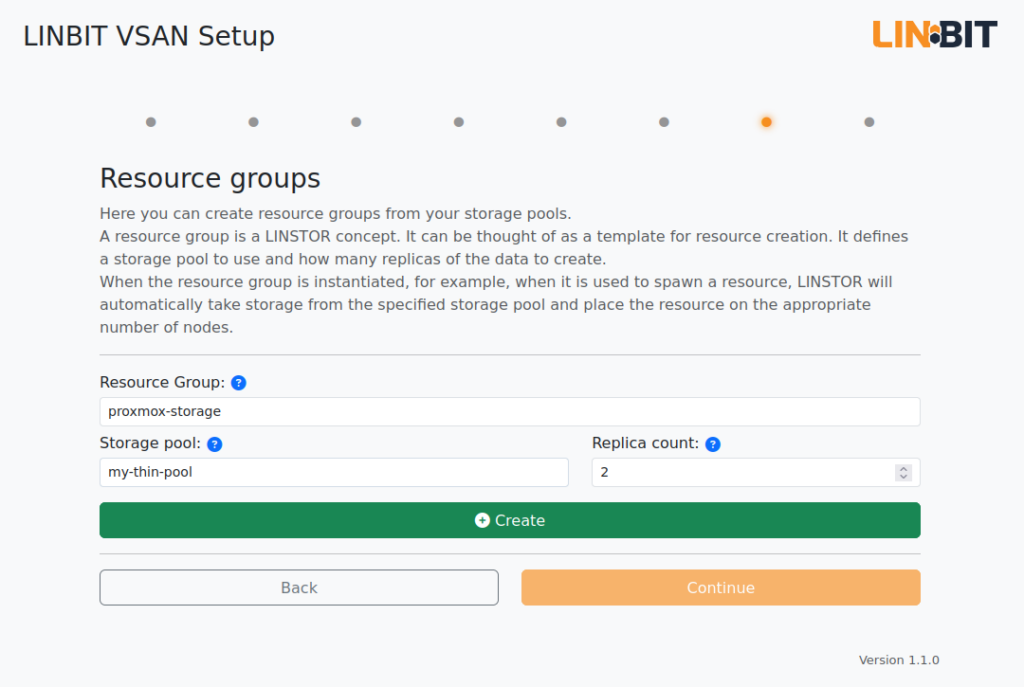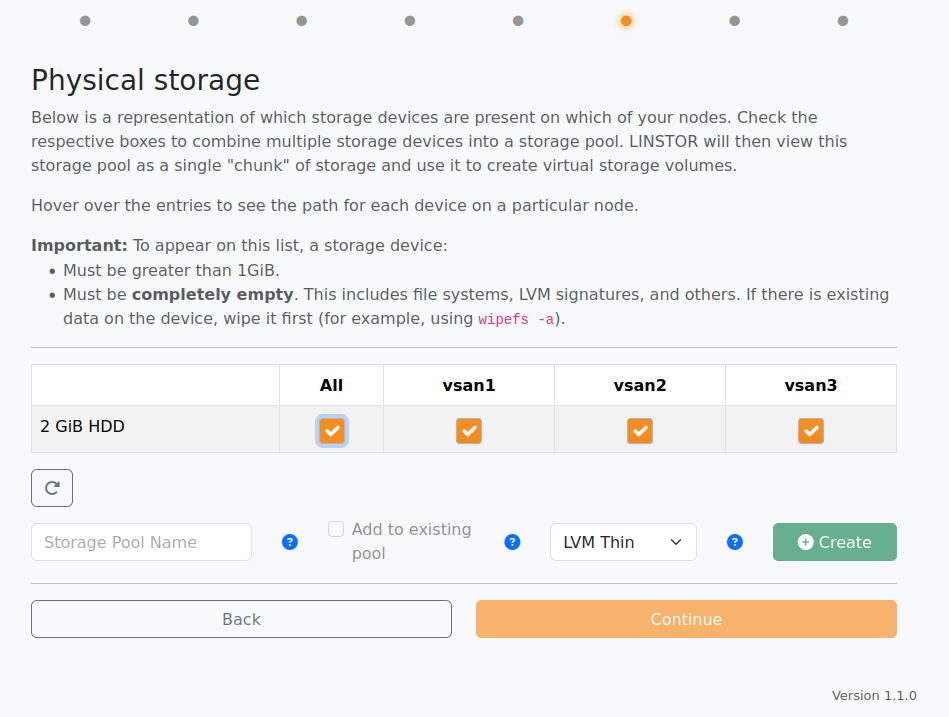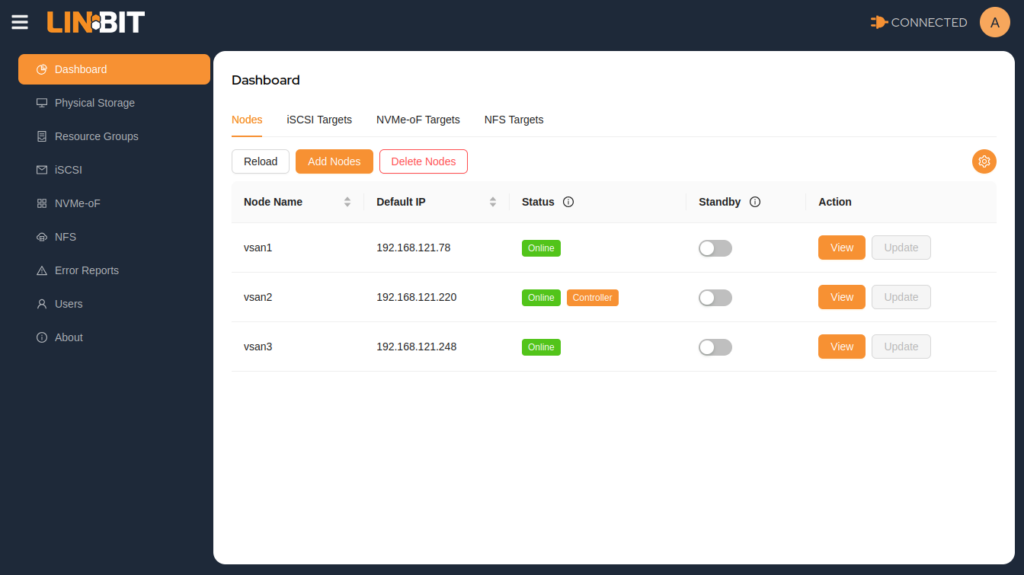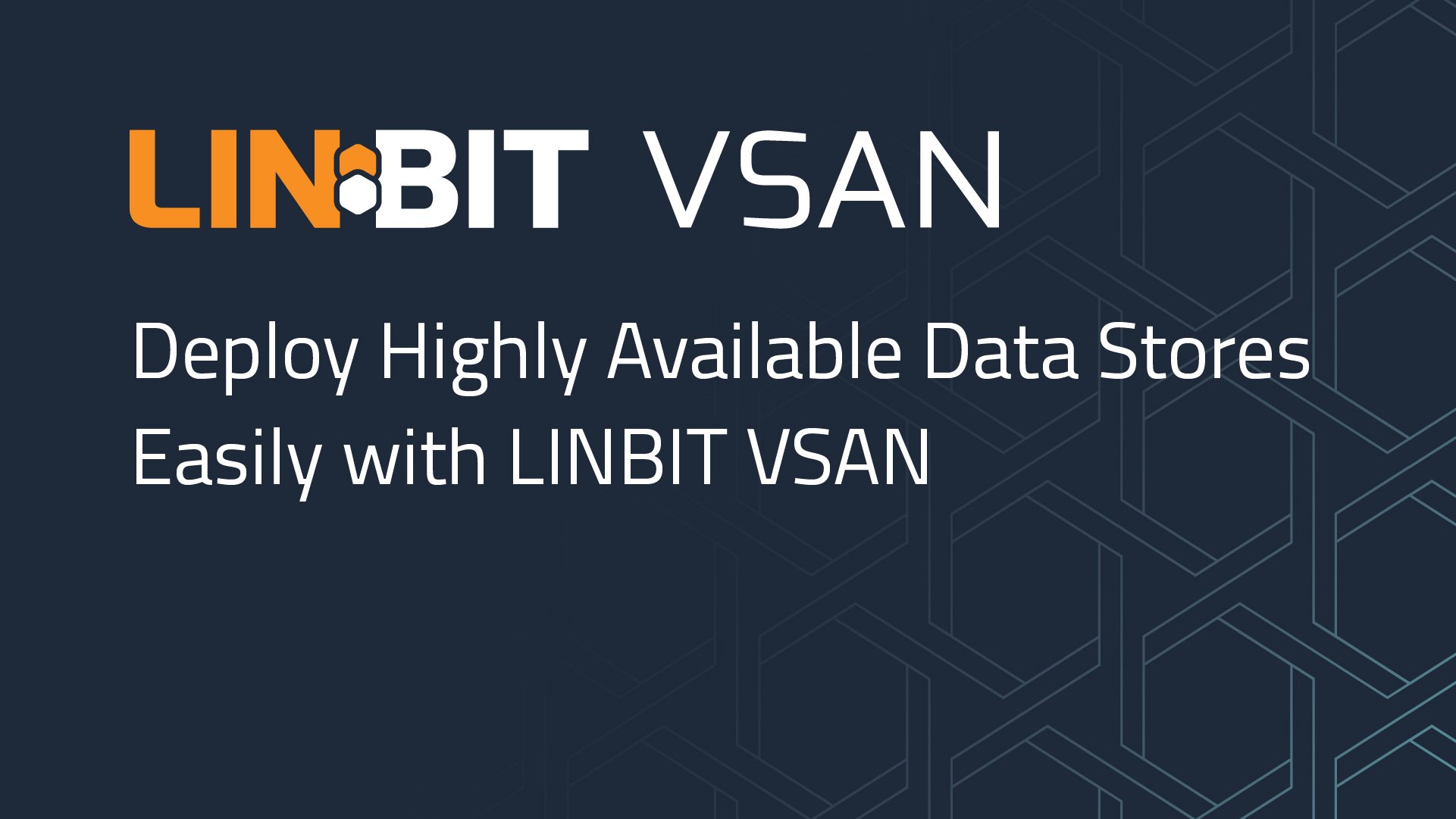LINBIT VSAN is a virtual storage area network (VSAN) appliance that you can use to easily create highly available data stores for your hypervisors. Originally, the LINBIT® team developed VSAN with VMware ESXi as a target platform in mind, but it is fully independent of the hypervisor software and you can use it with other hypervisor software and virtualization platforms that support NVMe-oF, iSCSI, or NFS data stores, such as CloudStack, OpenNebula, Proxmox VE, Xen Orchestra, and others. It has a simple graphical installation program and user interface, and requires no Linux skills, even though the solution runs on Linux under-the-hood. Just bring your own storage nodes, launch the graphical installation program from the downloadable ISO image file and you are on your way.
Even if you are already familiar with the concept of a VSAN, the LINBIT VSAN has some compelling and unique features. This article will overview some of these features and show you how using LINBIT VSAN can help you.
Building a High Availability Cluster with Quorum
LINBIT VSAN builds upon the long-lived and trusted open source data replication technology, DRBD®. DRBD has been helping people create high availability (HA) clusters for more than two decades. Because LINBIT VSAN uses DRBD version 9, there is a built-in quorum feature that helps you avoid data divergence in your cluster. Say no more to split-brain situations that might result from a two node deployment, and without the need to install and configure STONITH devices or a complex cluster resource manager (CRM) such as Pacemaker.
Creating Highly Available Data Stores
The end product of a LINBIT VSAN deployment is one or more highly available data stores that you can use for primary storage for your virtualization platform, or secondary storage if you choose to use LINBIT VSAN to create an NFS data store. Wherever you might want data highly available, LINBIT VSAN can likely help you.
Automatically Replicated Volumes
By using the DRBD Linux kernel module, data storage is automatically replicated in real time as writes happen. Writes to a VSAN primary storage node are replicated to VSAN secondary storage nodes in your cluster, based on the replica placement count that you specify. Most people will use this to facilitate high availability of applications and services in their clusters. In the case of a hypervisor, by putting VM disk images on HA storage, you get benefits such as live virtual machine (VM) migration which is particularly important for failover events and keeping your VMs up and running.

A VSAN deployment requires at least three nodes but only two nodes need to be diskful storage nodes. You need to have a third node for quorum purposes, discussed later, but this can be as basic as a low-powered single-board computer, or even a basic VM running in a cloud.
📝 NOTE: VSAN is only supported on x86_64 platforms at this time.
LINBIT VSAN supports deployment on clusters of more than three nodes. It is possible to create a VSAN appliance with a cluster of up to 16 nodes. However, for quorum purposes, deploying an odd number of nodes is recommended.
Thin Provisioning
LINBIT VSAN can also help with thin-provisioning your data store storage. By choosing VSAN-created storage to back your data stores, storage resources are allocated on an as-needed basis, rather than upfront allocation. LINBIT VSAN also supports LVM thin-provisioned volumes for further flexibility with your storage allocation. By using LVM thin-provisioned volumes as back-end storage, you can have benefits such as volume snapshots and volume snapshot shipping that you might use as a part of a disaster recovery plan.

A Web Dashboard to Monitor and Manage Storage
LINBIT VSAN has an integrated Grafana dashboard that you can use to quickly check the health of your cluster and storage resources. You access the VSAN dashboard through a web-based console.

LINBIT VSAN is a customized Linux distribution based on AlmaLinux and keeps pace with updates to the upstream AlmaLinux distribution. At the time of writing, VSAN uses AlmaLinux 9.
High Performance IOPS and Throughput
Because LINBIT VSAN uses DRBD data replication technology, you do not have to sacrifice performance to achieve high availability. DRBD is an in-kernel module that has been honed for performance. LINBIT performance testing proves that as the team continues to set IOPS records. First 14.8 million IOPS in 2020 on an Intel platform, and most recently, 25.5 million IOPS in 2023 on an Ampere platform. You do not have to take our word or results for this though. Independent testers, such as StarWind1 and Andrei Kvapil of CozyStack have also had good results performance testing DRBD and LINSTOR®, even on more modest setups.
Conclusion
Installing and using LINBIT VSAN requires a support subscription from LINBIT. LINBIT offers a few different tiers of support subscription, including a modestly priced “LINBIT VSAN Basic” subscription that can get you going. If you are interested in a support subscription, or want to evaluate LINBIT software first to gauge a support purchase, reach out to the team.
- When evaluating StarWind’s performance testing results, keep in mind that StarWind used DRBD’s TCP kernel model, rather than its RDMA kernel module. It is also not recommended to use RAID 5 for DRBD’s metadata, as was done in Starwind’s testing. Using non-parity RAID (such as RAID 1) for DRBD’s metadata will allow for better performance. Finally, consider that DRBD used the least amount of CPU among the evaluated solutions through all of the tests that StarWind ran.↩︎


